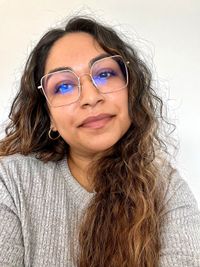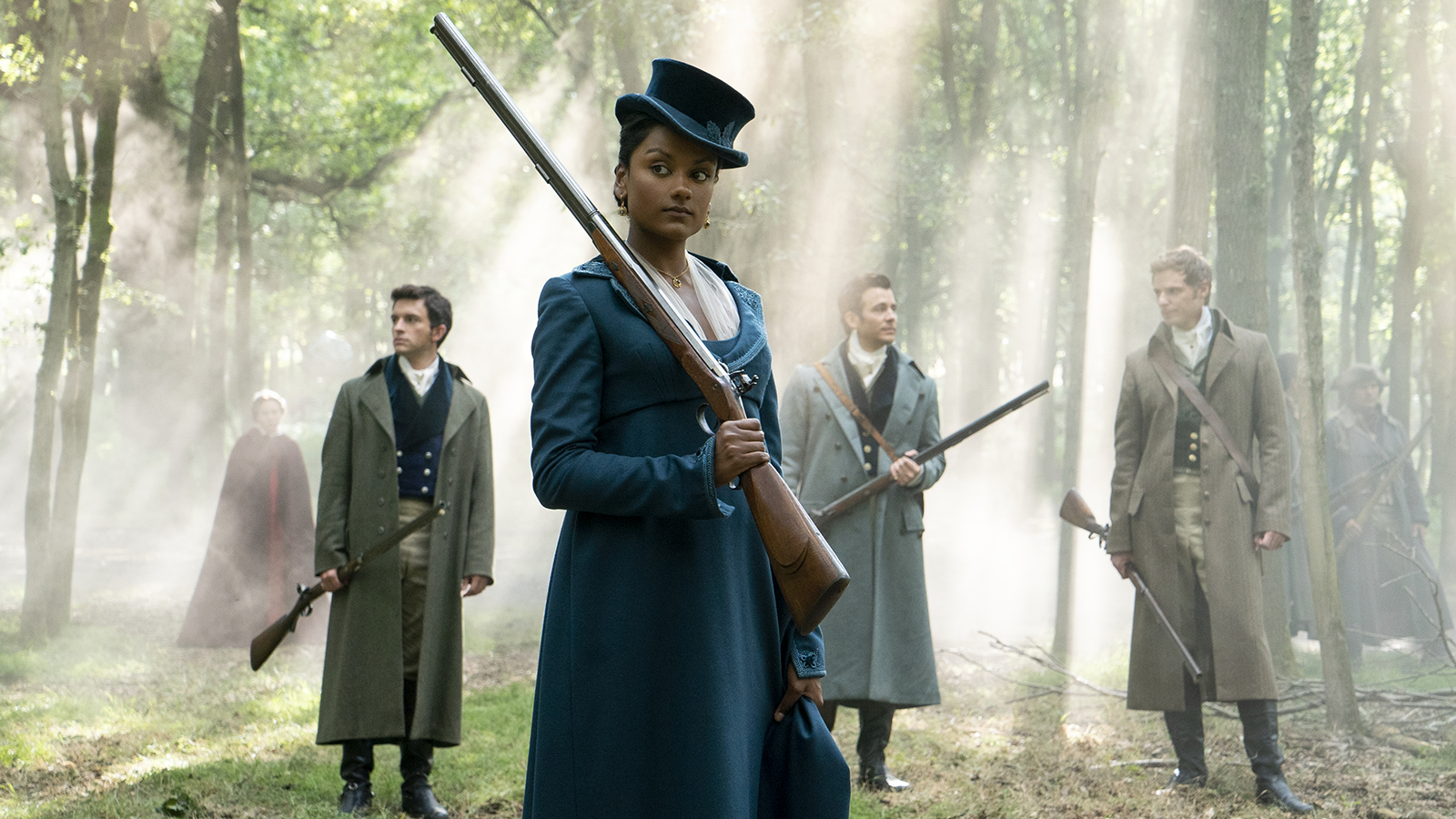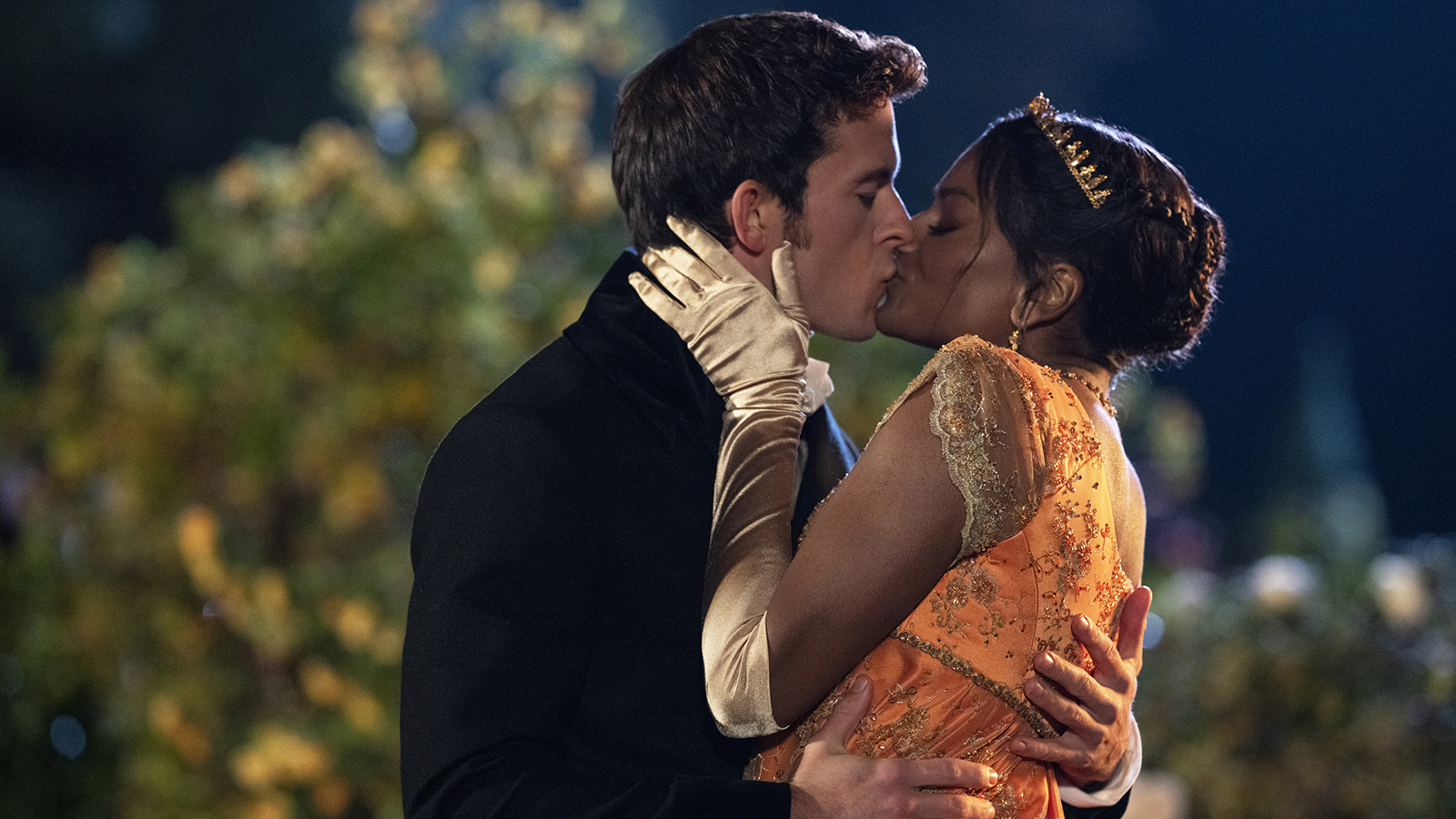Bridgerton’s South Asian representation taught me not to compromise because of my skin color
Bridgerton’s Indian influence connected the two opposite ends of my identity for the first time in 30 years


*Warning: Bridgerton season two spoilers ahead*
Jenna Rink, Allie Hamilton, Andie Anderson—those were the girls I wanted to be when I grew up. The effortlessly beautiful romantic leads who were loved and chosen and fought for despite their commanding personalities, complicated backstories and non-negotiable boundaries.
But in my gut I knew that could never be me. Growing up in a western society, born in England just like the rest of my friends, I felt like I should be the same as everybody else. But I, unlike my friends, didn’t look like the girls on the TV who were always being chased. Even the rare few Bollywood films that I would watch now and then with my family were filled with very fair-skinned Indian girls who were—on the most part—quiet, subservient, coy. Anyone like me who was loud, forceful and “bossy”, like the typical romcom heroine, but had brown skin was never admired by the dashing romantic hero.
And then along came Kate Sharma. The assertive, sharp, unbending, lovable, dark-skinned romantic lead who brought along with her all of the touches to my heritage that I’d never realized I missed in my everyday domain. Watching the character’s intense, honest, embodying love story as a single, (relatively) young South Asian woman, who deep down still believes in that wide-eyed notion of happily ever after, I was taken through an emotional journey that pulled on my layered self-identity and examined the ingrained relationship I have with my culture, my worth and my place in society.

It all started with the chance meeting between the handsome Viscount of high breeding and the dark-skinned beauty who looked unlike any other romantic protagonist I had seen on screen before. Most of us have grown up with the often unspoken notion that essentially it’s bad to be dark. From the known prejudice that darker-skinned individuals face, to the prominence of skin bleaching “beauty” in South Asian societies, it’s something that has been and still is, a latent thread through the progression of humanity—shrouded in progressive western societies by the media’s box-ticking efforts, the seeming “approval” of darker skin reflected by tan lines and bronzing products and the Kardashian-fuelled admiration of the “exotic”. Even as someone who’s significantly lighter-skinned than Bridgerton’s Simone Ashley (Kate Sharma) and Charithra Chandran (Edwina Sharma), I myself grew up with a shame about the color of my skin because I didn’t look like my friends at school and—as many a distant relative and family friend loved to point out—wasn’t “beautifully fair” like my younger sister. So to see—not only two girls who “looked like me”, but two girls who were actually darker skinned than me—as the romantic leads on one of Netflix’s biggest shows ever, felt irrationally alien but inscrutably exciting.
“Making the Sharmas of South Asian descent was actually a very simple choice,” creator Shonda Rhimes said of the Bridgerton cast to Netflix. “I wanted to feel like the world we were living in was as three-dimensional as possible, and I wanted to feel like the representation was as three-dimensional as possible, too. Finding South Asian women with darker skin and making sure that they were represented on screen authentically and truthfully feels like something that we haven't seen nearly enough of. I felt like it was time for us to make sure that we were seeing as much as possible.
“We're just not interested in erasing anybody from the story, ever,” added Shonda. “When you're watching television, you should get to see people who look like you.”
Like many South Asians who were born and brought up in a western society and have never known any different, I (and my mother and sister) never felt quite at home in any one community. We were always the other—in the western society where we looked different to everybody else and in the eastern society where we dressed differently to everyone else, held different values and couldn’t converse in the same language. But seeing Simone and Charithra on screen in what is one of western society’s biggest TV hits of the last few years, it felt like the two parts of my identity had finally converged after three decades—the circle that I had spent my whole life existing in was saying: we see you, we accept you, and you can be just like everyone else.

My poignant journey throughout the series took a turn for the emotional when I started to notice cultural influences that I had never connected to the former part of my British Indian identity. The things that existed only in the small Indian bubble of my home and my family life and the relationships with the people who I grew up with. I did a double-take at the TV when Edwina addressed Kate as “didi”. No big deal was made out of this in the scripting—it rolled off her tongue just like it has done for the many younger cousins and family friends to whom I have been a didi for my entire life. What many could be left to believe was just a sweet nickname between the sisters, I knew was a term of respect that meant “older sister”.
The references made to Bombay, where my own father was born and lived throughout his childhood. Edwina’s knowledge of Marathi—a language known to only a small demographic of Indian people—the language of my father, of my grandparents, of my ancestors. The language spoken by the people from the state of Maharashtra, the state where Bombay lies, the state where my family originates from, that connects many of its descendants with the recognizable ‘kar’ suffix in their surname. A part of my history and my ancestry that nobody in my everyday life—my friends, my colleagues, even my closest confidants—knew anything about. It was suddenly brought to the attention of millions of people around the world in a season that had become the most-watched Netflix English-language TV title in its premiere weekend in the streamer’s history. Even smaller aspects like the Indian-style jewelry and embroidery on their outfits and the visible and all-too-familiar silver stretch marks on the dark skin of Edwina’s chest were endearing touches.

The most stirring moment for me, though, came when Edwina was preparing for her upcoming nuptials with her sister and mother. Many viewers have referenced the traditional Haldi ceremony that was displayed on screen—the pre-wedding ritual that was actually customarily held to lighten the skin of the bride so that she could be as fair and radiant as possible on her big day, but is now continued as a nod to tradition with little such belief in its original purpose. Although it’s a ceremony that my immediate family and I don’t participate in for ourselves, I have attended a handful of these rituals in the famous week-long run-up to the weddings of close friends and wider family.
For me, the poignancy of this beautiful scene came not from what you could see, but from what you could hear. A familiar tune known to probably nearly every Indian person who owns a TV. We all love the signature 1800s-style song covers that have peppered the narratives of both series one and series two, but this scene saw the regency reimagining of chart hits from the likes of Calvin Harris, Rihanna and Miley Cyrus, joined by the title song of one of Bollywood’s most famous films to date, Kabhi Khushi Kabhi Gham. Now, I’m far from a devout Bollywood fan, having probably watched no more than a dozen Hindi-language films throughout my life, but even I have a special place in my heart for this movie.

To hear that recognizable melody accompanying a scene in such a mainstream western hit unexpectedly piqued my emotion in a way that left me tearful—not only in that moment—but every time afterward that the scene was brought to my attention. Even on rewatching with my (usually relatively unemotional) sister, she was equally taken aback at the inclusion of such a prominent Indian pop culture representation, remarking, “this moment feels like it’s been made just for us”. It was like we were both being given permission to show a modicum of pride in the cultural influences that—apart from when that token bhangra song plays in the clubs—have never really felt “cool” in the world we live our everyday lives in.
And this was only exacerbated by the representation of the relationship between Kate and Viscount Anthony Bridgerton (played by Jonathan Bailey). Unlike the aforementioned 13 Going on 30, The Notebook and How to Lose a Guy in 10 Days protagonists, who seemed like easy choices to love, to me Kate Sharma and everything she brought with her felt like a difficult pick for a handsome romantic hero that has garnered the admiration of the world’s thirstiest. This is not to say I didn’t agree with the choice—I celebrated it—but intrinsically to me she felt difficult to love by someone such as this adored icon of high society. Sure, she was sharp, intelligent, obstinate—just like the best romcom females—but she was dark-skinned with a rich Indian heritage that shone through her character, costume, speech and habits. So to see the worth that Anthony bestowed on her, the way he didn’t see past everything that she was but instead embraced and loved it, the way that Kate never had to compromise herself to make up for her skin color, was honestly a wake-up call to me—even at 30 years old. Growing up, the strong, outspoken women who were always picked on-screen never looked like me. There was no example to teach me that I should create boundaries and have high standards and not settle with something that I was unhappy with—be it in a romantic situation, a friendship capacity or a professional environment—because it always felt like I should be grateful that someone was willing to “put up with” my skin color. Media taught me to take what I could get and adjust myself and my own expectations to make other people happy with who I am—but Kate Sharma is teaching the next generation to embrace their color, embrace who they are and let themselves be loved (and more) without compromise.

“Is that a promise, Kathani Sharma”—the feeling that this line gave me was inexplicable. It was part disbelief, part admiration and respect, part realization, part empowerment, part hope. I couldn’t believe that those words were coming out of Anthony’s mouth—not just because he devotedly loved her no matter how challenging her personality, how dark her skin color and how different her culture was to his, but also because he was choosing to call her by her full Indian name. He wasn’t anglicizing her. Although something as simple as this shouldn’t create such a feeling of respect for him, it did—it made me respect him for loving her like that. In this moment, he’s not making her an 'other'—she’s not some “exotic” figure, a political choice, a doll on his arm that he’s trying to make trendy by making her fit in more with the mainstream crowd—she is just her and that is who he loves. The decision to use her full name at that point in the script, not only somehow anchored the depth of their relationship and love for each other (and sent Anthony through the scales in the respect stakes), but it was an explosion through a barrier for so many people who struggle with their own names and their own identity. It was a moment to me that was transcendent, transformative and pure.
Some viewers have found certain representations of the culture problematic and have picked out inaccuracies, like the language reference to “hindustani” (which should be “hindi”) and the slightly clumsy nod to Ghalib. But for me, the overarching celebration of the culture made a much bigger impact than the smaller details. I thank Bridgerton, I thank Shonda Rhimes, I thank Simone Ashley and Charithra Chandran and Shelley Conn for bringing my culture and my heritage into my mainstream western existence. For making me want to weave the two worlds together going forward and to embrace my culture and history more. For helping me to see that it’s cool to be Indian. And I thank Kate Sharma for influencing my learning, even at 30 years old. For teaching me to be me, without compromising just because of the color of my skin.
I hope there’s a new cohort of little South Asian girls out there (or perhaps teenagers given the age rating)—the dark-skinned and the light, the quiet and the loud ones—who live by her example and only want to be Kate Sharma when they grow up.

Aleesha was Deputy Editor and Beauty & Fashion Editor for My Imperfect Life, where she headed up the beauty, fashion and eCommerce pages. Previously she was Shopping Writer at woman&home and gained an AOP awards nomination after working on their news team. She earned an MA in Magazine Journalism from City, University of London in 2017 and has since worked with a number of brands including, Women's Health, Stylist and Goodto. When she’s not testing all the new beauty & lifestyle products on the market, Aleesha spends her time soaking up the newest bestsellers and Netflix releases, watching everything Marvel, learning about different wines, attempting new languages and traveling as much as she can.